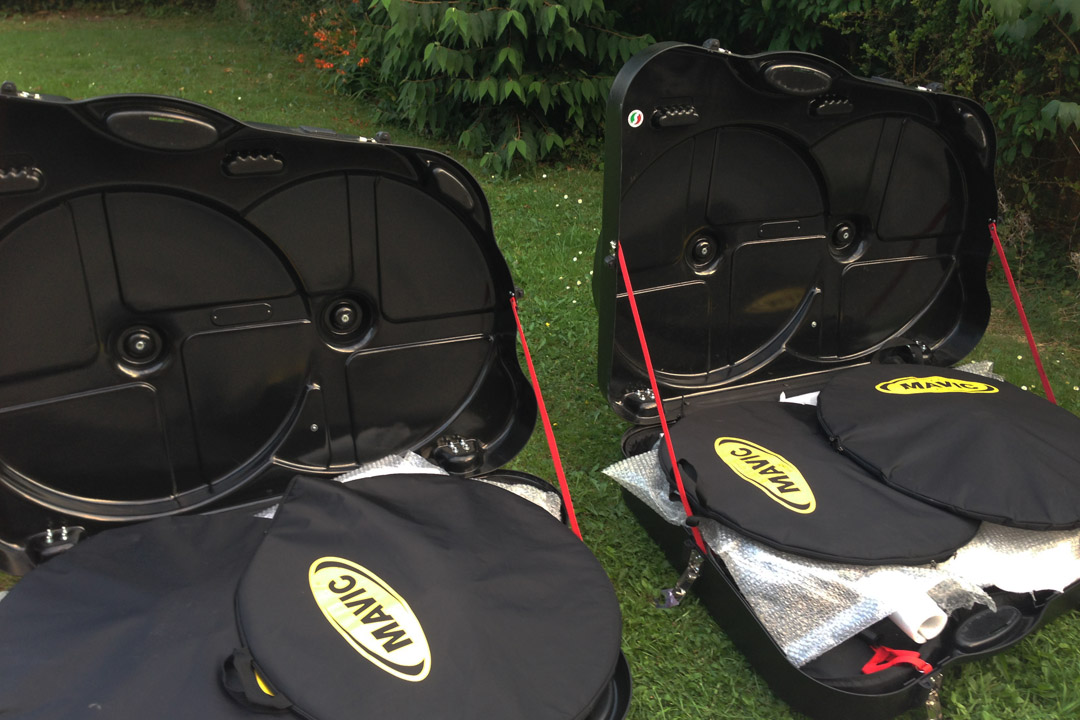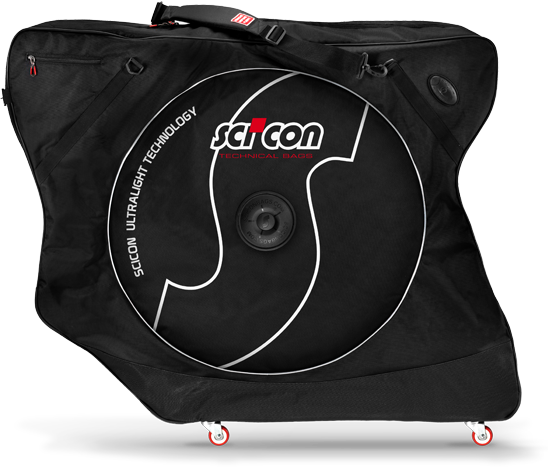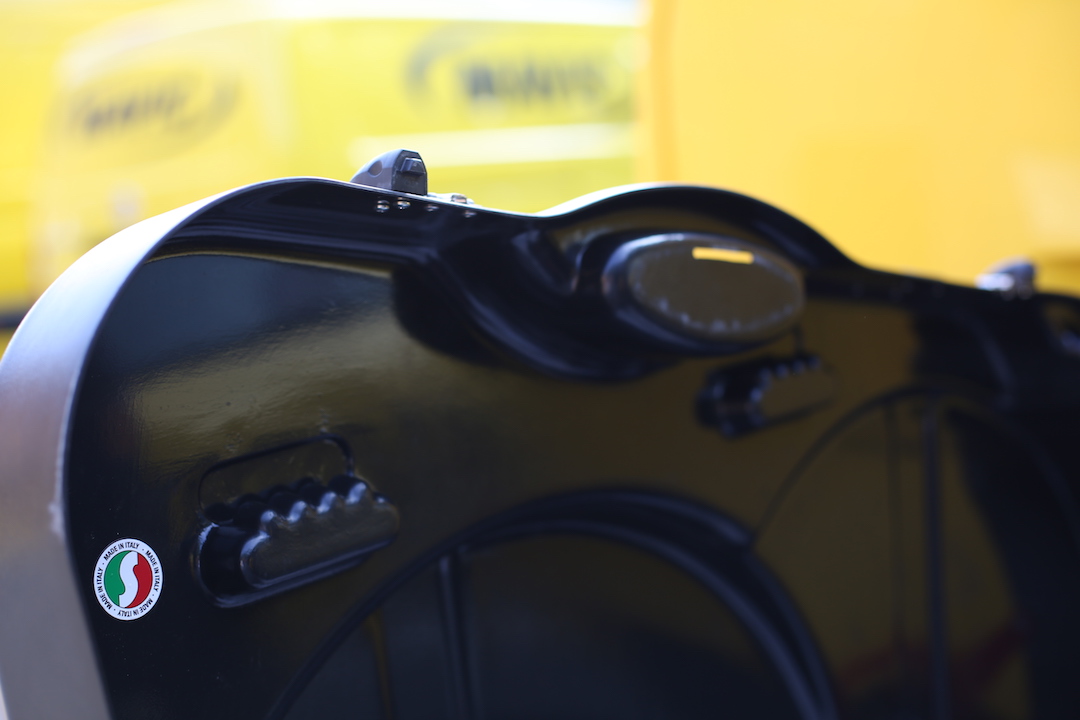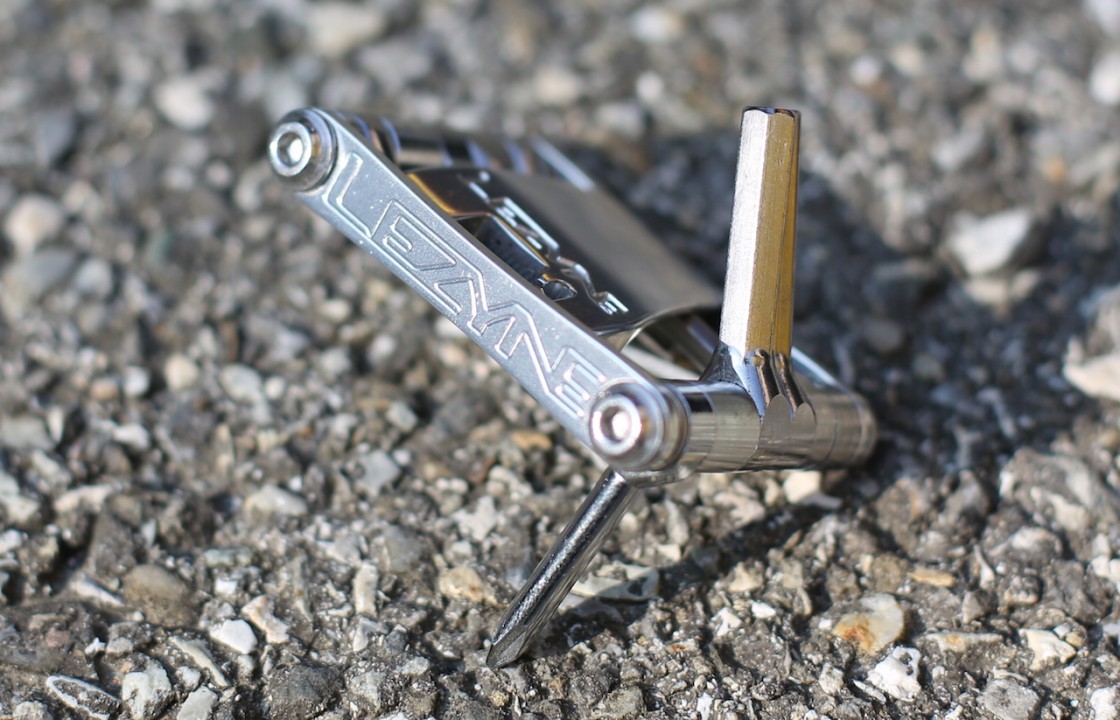Learn
- Cols //
- Cycling Tours //
- Learn //
- Ask the experts //
- Shop
How is it best to travel with your bike?
Bike case, bike bag or cardboard box?
Bike case, bike bag or cardboard box all have their pros and cons. Many cyclists ask themselves the same question year on year. How can I transport my bike so that it arrives safely at the upcoming sportive, training camp or mountain mission as we often find ourselves on at The Col Collective?
These are things you should consider when choosing
1. Required level of protection
2. Weight restrictions
3. Functionality
4. Price
The first question you should ask yourself is which level of protection is required to protect your precious bike from being damaged in transit? Stay tuned as we have the answers for you! Almost all airlines require you to check in your bike packaged. This leaves you with three solutions to transport your bike.
THE CARDBOARD BOX CONUNDRUM
The cheapest option is to get hold of a cardboard box. This option is often available for little to no money from your local bike shop. The cardboard box is light, provides extra space to store other equipment and can easily be stacked. After the trip, the box can be recycled. So far so good.
The downside of the cardboard box though is that it is unstable and in the event of mishandling by airport ground handling staff, it is likely to get seriously damaged, which leaves little to no protection to your bike. Torn and punctured boxes are often the result. No matter how worthy the content of a cardboard box may be, it is more than likely to be thrown around, just as any other box that is handled by a parcel carrier.

The cardboard box itself will not provide enough protection on its own. In order to protect your bike, you will soon be heading down to the local DIY store ending up spending additional money on bubble wrap, pipe insulation, cable binders and tape. To train your gift wrapping skills for Christmas, packing a bike in a cardboard box can be a good idea, but bear in mind that this activity will take up a lot of your time that you could instead use to ride your bike!
In addition to the low level of protection, you need to know a thing or two about dismantling your bike in order to store it properly inside the cardboard box. A minimum level of mechanical skills is not enough to dismantle your bike’s parts as such as the handlebar, the seat post, the rear derailleur etc. This is even more of an issue if you’ve had your bike professionally fitted as you will ruin the settings through the dismantling.
Initially, being the cheapest option, the cardboard box requires mechanical skills, provides you with the least protection, and the probable option of a bad surprise at the arrival of your destination.
Cardboard box rating
Pros
- Cheap
- Light
- Space for other equipment
Cons
- Very easily damaged
- Requires extra time padding
- Requires mechanical skills to pack bike
THE BIKE CASE - PLAY SAFE?
One of the safest options to protect your bike is surely a rigid bike box. This is usually the priciest option. A bike box provides the highest level of protection, preventing the contents to be harmed by knocks, shocks and punctures. Depending on the model, it has dedicated areas to protect wheels and also provides additional space to store equipment, like a neoprene suit, shoes, helmet etc.
Although providing the highest level of protection, there are some downsides to bike boxes, too. A bike box itself can weigh quite a lot so check with your airline before departure what their maximum limit is for sporting goods. In some instances you could find you are very close to the limit (if not over) so make sure you weigh your packed bike box so that you avoid any nasty excess baggage fees on arrival at check-in. There are some premium bike boxes, that are built with lightweight technology that weigh around 12kg. These models will help you stay within the weight allowance while protecting your bike optimally.
Although a bike case protects your bike much better than a cardboard box or a bike bag, it is prone to be handled roughly by airport ground handling staff. It is more than likely to be thrown around, dropped from height and to be stacked. Every owner of a bike box who has seen his bike case drop 10 meter onto the runway knows this uncomfortable feeling that arises between leaving the plane and collection of the baggage. A good bike box may not survive a drop without damage, but the bike itself should be intact! Just like a good helmet!
An additional feature that bike cases often provide is a flat surface. The flat surface itself is not the issue, the technology that ground handling staff are using is. With an average weight of 20kg of luggage per person and over 200,000 passengers per day in Heathrow Airport, baggage handlers are confronted with quite a challenge to get your luggage from check in all the way to the plane on time. Many airports have state of the art luggage handling systems with miles and miles of conveyor belts, but there are processes that require a baggage handler to get involved. Before the baggage lands on the little baggage trailer that brings it to the plane, a baggage handler has to load it from the conveyor onto the trailer by hand. To load the trailer, the luggage handlers often enjoy the assistance of a vacuum lifting aid. That makes lifting, throwing and dropping your bike case super easy, provided your case has a flat surface. Luggage like bike bags, do not provide this contact surface and have to be loaded by hand.

With ever increasing numbers of travelling cyclists, baggage handlers are more and more sensible and informed when loading baggage that contains expensive items like bikes as claims for damaged baggage are a cost to the airline. If your bike case has a standard cube shape, handlers often don’t know that a bike is inside. Be very clear to at the check-in as to what is inside your case, even if this may result in a higher handling charge. It will pay off in the end if your baggage was damaged and you have to claim. Honesty always pays out!
Finally, functionality plays a vital role choosing the right bike case and planning your trip. Do you have the mechanical skills to dismantle your bike to fit it inside the bike case? Most models of bike cases will require the wheels, handlebars, seat post, pedals and rear derailleur to be taken of. There are some premium models that allow the seat post and rear derailleur to stay in place (if you have a seat post extension this feature is key) and a simple loosening and twist of the handlebars. You will most definitely have to be able to work with a tool and dismantle some of the equipment.
If you are often travelling to the USA, make sure your bike case is equipped with a TSA lock. There is nothing worse than having customs officers breaking into your bike case. Some premium models are very well organized with dedicated spaces for all of your equipment, that can be inspected by customs staff without having to remove anything. If you wrap everything in bubble wrap and shove the equipment into the case, it will be like Christmas for the customs officer! Most probably they will unwrap everything and shove your equipment back in the case. Don’t create the need for customs officers to unwrap everything. Make sure the case you opt for has sufficient padding and has dedicated spaces for your equipment, to avert disaster!
Last but not least, think about getting around and storing the bike box at your destination. If you are travelling in a group and are renting a car, make sure that the car is big enough to carry your bulky bike case. The same applies for the accommodation. Make sure you have sufficient space to store the bike case.
Bike case rating
Pros
- Offers maximum protection
Cons
- Expensive
- Bulky
- Requires mechanical skills to pack bike
THE BIKE BAG (AKA ‘THE MIDDLE MAN’)
A bike bag has a very low weight, a high level of functionality and a reasonable price. Many bike bags weigh between 3-8 kg and leave you with more than enough headroom to stay within the baggage allowance of most airlines. Some models of bike bag are equipped with an internal metal structure to mount your bike frame. This integrated solution protects your fork and rear dropouts from impacts. A cracked fork is an unpleasant thing to say the least! The more basic bike bags will require you to dismount the wheels, handlebars, seat post, pedals and rear derailleur. Again, you will need to have some mechanical skills to remove and assemble the equipment. If you can, make sure the bag comes with a TSA lock and wheels to move easily around airports and hotels. Remember, the bike bag is an additional piece of luggage you will have to handle!

There is one premium model of bike bag available that provides the highest level of ease and protection: The Scicon AeroComfort 2.0 TSA. This bike bag allows you to keep the handlebars, seat post and pedals in place. All you have to remove is the wheels. While providing great functionality, the product provides highest levels of protection, with well thought protection placed throughout the bag to protect the critical areas of the bike. This option is the first choice of many professional cycling teams worldwide.
All in all, a bike bag is probably the most efficient solution providing the right balance between weight, protection and functionality, but we all have different needs so the choice is yours.
Bike bag rating
Pros
- Light
- Functional
- Reasonable price
Cons
- Mechanical skills required
By Chris Pearce from Scicon.
For 25% off special edition Scicon items click and use the Col Collective discount code below.
For more help and advice why not ASK THE EXPERTS
Topic: Bike transport · Travel
More advice in this topic

How to Avoid Excess Baggage Charges when Travelling with Your Bike?

Essential tools & spares when travelling with your bike

Five Must Ride Climbs in the Pyrénées

A Beginners Guide to Cycling in the Mountains












